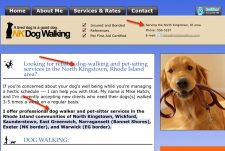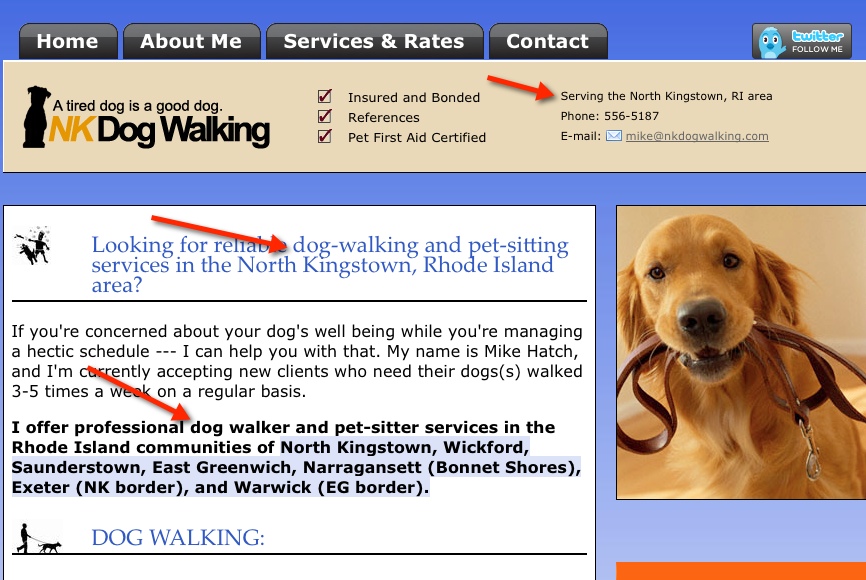
Is your local pet business website missing this critical content?
If the mission of your website and/or Facebook efforts is to bring more customers to your local pet business, you may want to give yourself a reality check on the LOCAL aspect of your content.
After all, people in your community use LOCAL phrases to look online for the products and services you offer. They type into Google, Bing and other search engines: “[your town] pet supplies,” “pet groomers in [your town],” or “veterinary care in [your town].” Since search engines need to SEE the location information in your website text and other online marketing content (your blog, social media and YouTube videos), these basic phrases need to be included on every page if possible.
Seems like a no brainer, right?
Well, sadly, MOST local pet businesses forget to put their location in their web content. I recently audited nearly 100 different local pet business sites and found that many of them were missing their location or the area they serve. Plus I get calls from small local businesses, asking why they aren’t showing up in search engine results. I take one look at their sites and I can’t find their location… or it’s buried on only a single page of the site. I have to ask, “Where are you?”
If I have to ask this question to a local business, that’s a serious problem because Google won’t list that business in local search results. Luckily, it’s easy to fix. Here’s how in 5 easy steps.
Let’s say you’re a local dog walker and you also offer in-home pet-sitting services.
Step 1: Write down the locations you serve. To determine this for your customers, answer these questions: Where are you located (including the town and state)? What community do you serve? If you’re in a big city, what neighborhoods do you serve?
Step 2: Put those locations in your content. Let’s start with your website home page. Ideally, your location and contact information (at least your phone number) will be listed in your header area, right at the top, so people (and search engines) can always see it, no matter what page they’re viewing as they browse through your pages.
Step 3: Put those locations in your tags. Make sure your location and your product or service are BOTH listed together in your Page Title Tag and Meta Description… on every page with variations. If you’re using WordPress or any other content system you control, you can do this yourself. If not, ask your web programmer to do this for you. Let’s use the dog-walking business as an example.
- Your Page Title Tag could be: “Expert Dog Walking in [Your Town, STATE] – Smith’s Dog Walker Service in [Area].”
- Your Meta Description, which people see in your Google listing, could be: “For friendly, reliable dog walking in [Your Town, STATE] – try Smith’s Dog Walker Service in [Area]. See why our customers love us! 50% off your dog’s first walk.”
Step 4: Put those locations in your other pet marketing content (blog, social posts, etc). Congratulations on taking the time to write blog posts and social posts! To make them work their hardest and rank well in local search results, be sure to include your location! Remember, that’s how people are looking for YOU. For instance, a local blog post might might be: “Today’s funny dog walking adventure in [Your Town]”
Step 5: Claim your Google Place for Business listing. If you haven’t done this already, sign up for a free listing at Google Places for Business. Be sure to complete all sections with your product or service phrases “dog walking” in “[Your Town].”
If you follow just these 5 steps, you’ll go a long way toward getting better results in Google, and getting calls from more customers!
Until next time,
Here’s to a prosperous pet website!
Pam Foster,
PetCopywriter.com

